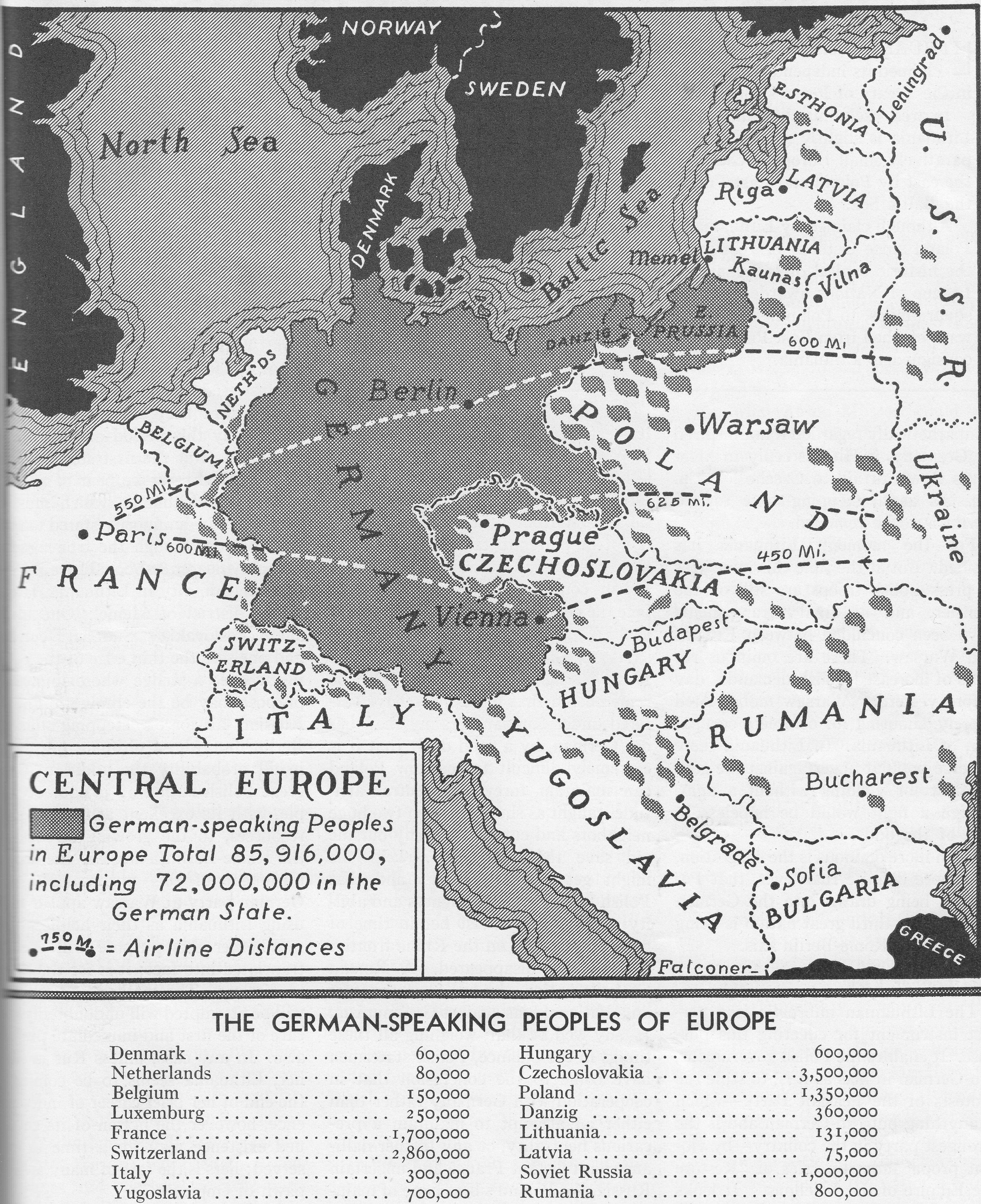German-speaking Population Map of Europe 1938


Alex Cartwright
Senior Cartographer & GIS Specialist
Alex Cartwright is a renowned cartographer and geographic information systems specialist with over 15 years of experience in spatial analysis and data...
Geographic Analysis
What This Map Shows
The visualization titled "1938 - Where Are the Germans?" illustrates the distribution of German-speaking populations across Europe at a crucial juncture in history. It captures the demographic landscape just before the annexation of Austria by Nazi Germany, a key event that set the stage for the expansionist policies of the Third Reich. The map highlights areas with significant populations of German speakers, allowing us to better understand why the Nazis claimed to be 'liberating' these populations.
Deep Dive into German-speaking Populations
In 1938, the German-speaking population was not confined solely within the borders of Germany. Instead, it spanned various regions across Europe, including Austria, parts of Czechoslovakia, Poland, and Switzerland. This widespread distribution of German speakers played a pivotal role in the Nazi regime's justification for territorial expansion and military aggression.
Interestingly, the German-speaking populations in Austria and Sudetenland (now part of the Czech Republic) were often cited as the primary targets for Nazi 'liberation.' In Austria, approximately 6.5 million people identified as German speakers, while in the Sudetenland, around three million people shared the same linguistic heritage. The Nazis capitalized on the cultural and ethnic ties that bound these communities to Germany, portraying their actions as a means of uniting 'ethnic Germans.'
Moreover, the map reveals the presence of German-speaking minorities in countries like Poland and Hungary. In Poland, particularly in regions like Upper Silesia, German speakers formed a significant portion of the populace. This demographic mixture often led to tensions, especially post-World War I, when borders were redrawn, and national identities were contested. What's fascinating is how the presence of these communities influenced local politics and national identities, contributing to the complex tapestry of European demographics.
The linguistic distribution also affects cultural aspects, such as education and media. For instance, German-language newspapers thrived in areas with high concentrations of German speakers, fostering a sense of community and shared identity. This cultural cohesion made it easier for the Nazis to rally support and manipulate sentiments among German-speaking populations, which they depicted as oppressed citizens in need of rescue.
Regional Analysis
Analyzing the map regionally, we see stark differences in the concentration of German speakers. In Austria, the population was almost entirely German-speaking, which made the annexation of the country a relatively straightforward endeavor for the Nazis. The swift integration of Austria into the Reich was met with little resistance due to the prevalent sentiment among Austrian Germans who saw themselves as an extension of the German nation.
In contrast, the situation in the Sudetenland was more complex. While the majority were German speakers, a significant Czech minority also resided there. This demographic mixture led to a political landscape marked by strife and division. The Nazis exploited this discontent, portraying the German speakers as victims of Czech oppression, thus justifying their intervention.
Moving to Poland, the distribution of German speakers was more fragmented, with pockets located primarily in Upper Silesia and Pomerania. The presence of German speakers in these regions often clashed with the nationalistic sentiments of the Polish population, leading to tensions that would culminate in the tragic events of World War II. This regional analysis underscores the critical role of language and ethnicity in shaping geopolitical dynamics during this period.
Significance and Impact
Understanding the distribution of German-speaking populations in 1938 is essential for grasping the socio-political landscape of pre-World War II Europe. The Nazis' claims of 'liberation' were not merely propaganda; they reflected a deeper strategy of exploiting ethnic identities for territorial gain.
Today, the implications of this historical demographic mapping resonate in contemporary discussions about nationalism, migration, and identity politics in Europe. As nations grapple with their diverse populations, the lessons from 1938 remind us of the potent mix of language, culture, and politics. Have you noticed how language still plays a crucial role in national identity today? As we reflect on the past, it becomes clear that understanding these dynamics is vital for fostering unity and peace in an increasingly multicultural Europe.
In conclusion, the map of German-speaking populations in 1938 provides more than just a snapshot of demographics; it serves as a reminder of the intricate relationships between language, culture, and national identity, which continue to shape our world today.
Visualization Details
- Published
- August 13, 2025
- Views
- 166
Comments
Loading comments...